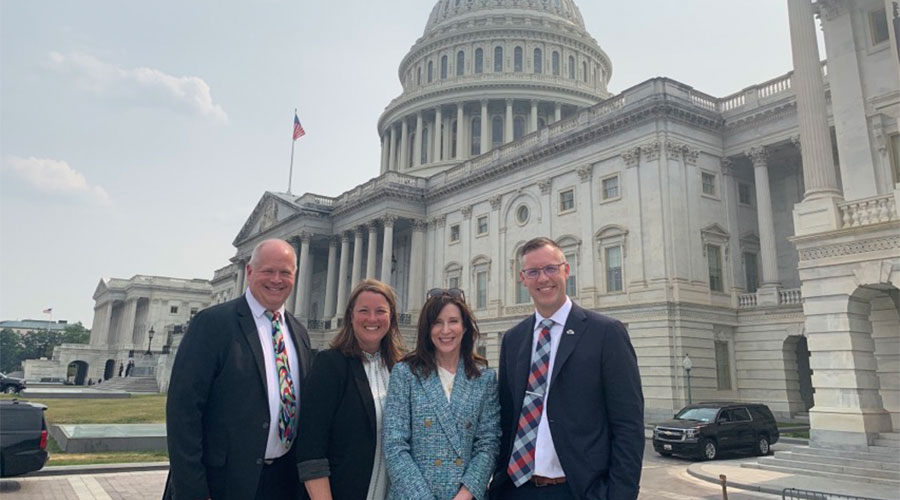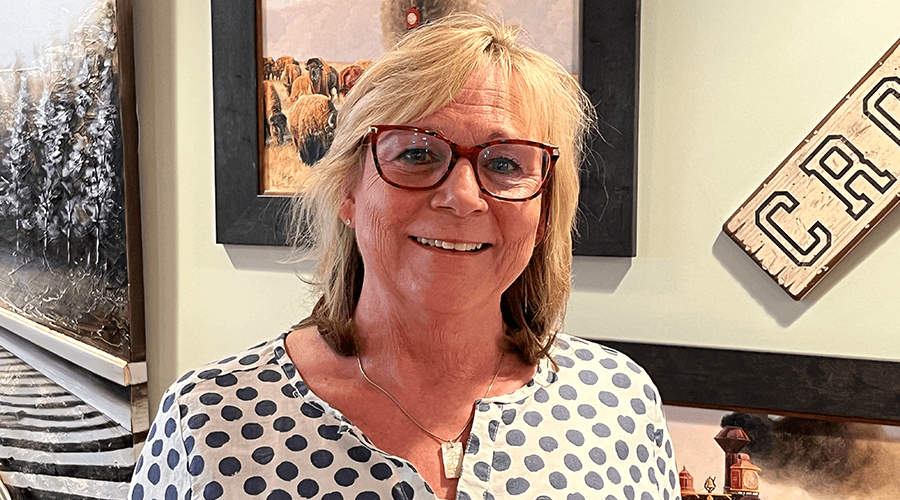The Evangelical Lutheran Good Samaritan Society – the nation’s largest provider of senior care and services – is sharing solutions with national elected officials in hopes of helping to address long-term care’s workforce challenges.
Four Good Samaritan Society executive leaders and representatives from three Society locations participated in the 2023 American Health Care Association/National Center for Assisted Living (AHCA/NCAL) Congressional Briefing June 5-6 on Capitol Hill in Washington, D.C.
The briefing gave Good Samaritan Society leaders the opportunity to collaborate with colleagues in the industry while also connecting with members of Congress and gaining insight on the latest policy developments.
Leadership participating in the briefing included:
- Nate Schema, president and CEO
- Aimee Middleton, vice president of operations
- Wanda Harris, executive director of human resources
- Tom Syverson, director of governmental affairs
- Karena Cunningham, certified nursing assistant and Good Samaritan Society – Syracuse
- Shyann Walker, administrator at Good Samaritan Society – Syracuse
- Kiara Tuchscherer, senior living administrator at Good Samaritan Society – Fargo
“During the congressional briefing, we had the unique opportunity to help lawmakers understand how they can best support the Good Samaritan Society team members to provide incredible care every day,” Schema said. “We also have a chance to learn about their priorities so we can work together better into the future.”
As an integrated health system with Sanford Health, the largest rural health system in the country, the Good Samaritan Society has launched creative workforce solutions and made historic investments in its people since the pandemic began, which include starting pay; bonuses; training and education; flexible scheduling options; benefits and well-being support.
Despite these efforts, staffing challenges persist.
The Centers for Medicaid and Medicare Services (CMS) is expected to release a proposed minimum staffing mandate for skilled nursing facilities this month. This week Good Samaritan Society leaders discussed with lawmakers the unique challenges a staffing mandate would present to the Good Samaritan Society.
“I think first and foremost, we want our policymakers to hear what this means for us in the upper Midwest,” Schema said. “We want them to understand that this is an access issue that is bubbling. And quite frankly, I think it could bubble over if a proposed mandate isn't put together in a very common-sense way with all the right pieces.”
A minimum staffing requirement enforced for all skilled nursing locations could mean the nation’s seniors, particularly those in rural areas, would pay the price, Schema said. Approximately 70% of the Good Samaritan Society’s long-term care residents live in rural communities.
“We need ongoing comprehensive investments to ensure our most vulnerable residents have access to the care they need and deserve, no matter where they live,” Schema said. “I’m extremely grateful for the opportunity to advocate for our residents and team members.”
Schema, along with AHCA/NCAL CEO Mark Parkinson and other industry representatives, also shared perspective on the current state of the long-term care industry at a press conference in Washington on Tuesday. The goal: Give Congress insight into how it can deliver meaningful solutions to address the long-term care workforce crisis and protect access to care for seniors living in rural America.
“It's important that we make our elected officials aware of how access to care could be affected by the decisions that they make,” Middleton said. “We have a unique opportunity to tell that story. Part of being integrated with the Sanford Health system gives us that opportunity to also tell it from both sides – from both the acute and the post-acute side of health care.”




